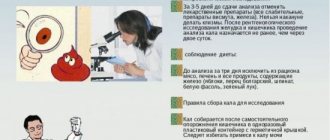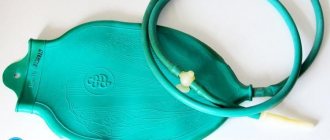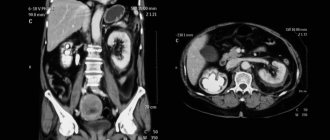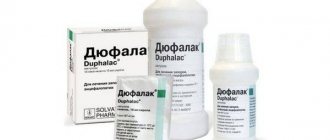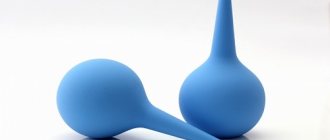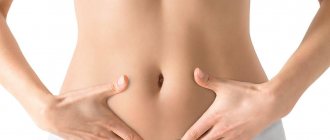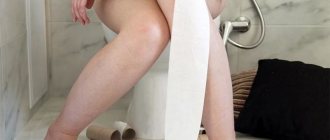Who is a proctologist
A doctor who diagnoses, treats and prevents diseases of the large intestine is called a proctologist (coloproctologist since 1997). Within the profession, there is a division into a specialist who treats diseases of the rectum with medication and surgery. The area of professional interest of a coloproctologist is diseases of the colon, rectum, anus with adjacent soft tissues, rehabilitation of operated patients, prevention of relapses.
The reason for a proctological consultation may be:
- constipation that torments the patient for a long time;
- diverticulosis;
- hemorrhoidal disease;
- anal fissures;
- tumors of the rectum, anorectal region
- polyps;
- fistulas of the perianal zone;
- admixture of blood in the stool of unknown origin;
- itching, burning, discomfort in the anal area, dermatitis, eczema;
- sensation of a foreign body in the rectum;
- periodic pain during bowel movements;
- false urge to have a bowel movement;
- incomplete emptying;
- flatulence;
- pathological discharge from the anus.
An examination by a proctologist is an intimate process that is difficult for many patients to endure, so the profession requires patience, tact and high professionalism. But a lot also depends on the patient for a complete, successful diagnosis. Depending on the purpose of the visit to the proctologist, special preparation is required, taking into account the possible need for a digital examination of the rectum.
What does a proctologist examine and how is the examination performed?
How is a proctologist examined? First, the proctologist listens to the patient’s complaints, asks questions and clarifies some important points, such as:
- frequency of bowel movements;
- the presence of a feeling of unemptied bowel;
- general health (whether there is a headache or weakness);
- the presence of blood, pus or mucus in the stool;
- nutritional features;
- possible independent treatment and in what ways;
- the presence of concomitant pathologies, especially gastrointestinal diseases.
Next, the examination itself is carried out. How is a proctologist examined by a proctologist for men and women?
The nurse accompanies the patient to the examination room and issues medical underwear for disposable use with an incision in the anus. The patient takes off clothes to the waist, lies on the couch on his side or stands in a knee-elbow position.
Next, the inspection is carried out according to the following scheme:
- Visual examination allows you to assess the severity of the ongoing pathological process.
- Finger examination - the doctor first treats the hands and anus with an anesthetic, which alleviates discomfort. This stage allows you to assess the condition of the muscles and detect formations. This is also necessary to determine possible contraindications for performing endoscopic examination.
- Anoscopy is a procedure for thoroughly examining the rectum and anus using an anoscope.
The appearance of discomfort and pain in intimate places is a very delicate problem. Therefore, it is important to know how a proctologist examines you, as this will help you mentally prepare for a visit to the hospital.
Rules for visiting a proctologist
Regardless of whether the patient is visiting a proctologist for the first time or is planning a course of outpatient therapy, there are three main rules for how to prepare for an appointment with a proctologist:
- A light diet with the exclusion of a number of foods before visiting the doctor.
- Cleansing the rectum.
- Hygiene of the outer surface of the anal canal after this.
You can get an appointment with a proctologist by referral from a therapist or by making an appointment yourself. At the reception desk, when a patient independently registers for a proctology appointment, they are given a special memo that describes in detail the course of pre-preparation for the appointment. For men and women, diagnostic procedures are similar and do not differ fundamentally. If a woman is menstruating, the examination date is postponed.
Why an enema?
A cleansing enema before examination by a proctologist is necessary for an effective examination. A cleaned intestine will not complicate visual and hardware examinations, but on the contrary will contribute to better information content of the procedure.
The colon cleansing procedure is performed 3-4 hours before visiting the doctor. In this case, the patient will need to do 2 cleansing enemas, with a break between them of 45 minutes.
Reference. If taken in the morning, then the procedure should be performed in the evening before going to bed, if in the evening, then after the morning toilet.
To carry out the procedure, the following devices and materials are required:
- Esmarch's irrigator.
- Warm water - 36-37°C.
- Oilcloth.
- Soap.
After checking and preparing the devices, you can begin the procedure, which looks like this:
- lay down an oilcloth and lie on your left side, bending your legs;
- raise the mug by 1 - 1.5 m;
- Lubricate the tip with Vaseline;
- carefully insert the tip into the anus;
- within 5-10 minutes all the water will enter the intestines;
- If discomfort occurs, you can stroke your stomach clockwise.
Some time after the procedure, you will feel the urge to defecate. You need to wait about 10 minutes and then have a bowel movement.
Why do you need Microlax?
If a regular cleansing enema is not suitable for the patient, then a laxative can be used.
Reference . Experts often recommend Microlax microenemas.
Before using Microlax, before visiting a proctologist, you should read the drug and instructions for use.
This medication is a combination medication. Its effect is to soften stool and increase the amount of fluid in the intestines.
The drug has practically no contraindications, except for individual intolerance to the components.
How to use Microlax before an appointment with a proctologist? The product is easy to use.
Who needs and doesn’t need to prepare for the reception
Everyone needs to prepare for an appointment with a proctologist. But there is an exception to the rule - this is the initial consultation. Such a visit to a proctologist lasts about an hour, involves collecting an anamnesis (including family, genetic), and reconstructs the exact picture of the disease in a question-and-answer mode. If the anamnesis provides a clear picture of the suspected pathology, the patient receives a referral for a follow-up visit for an internal examination of the intestine. If things are unclear, the patient is referred to related specialists for a differential diagnosis.
There is another option when you can show up for the first appointment without preparation - this is severe pain. In such a situation, the doctor will provide all possible first aid, but will not be able to carry out a full diagnosis. Only after the pain attack has subsided and preparation has been carried out, the patient will return for the second appointment.
What is bowel preparation for a visit to a proctologist and examination?
The standard option is an enema.
It is necessary to do two cleansing enemas of 1–1.2 liters of water on the eve of the examination. If the visit is planned in the first half of the day - one enema in the evening, one in the morning 4 hours before the visit (in extreme cases - 3 hours).
If the visit is in the afternoon, there are also two enemas, 5 and 4 hours before the examination.
At least 3 (and preferably 4) hours after the enema should pass before the examination because a little water remains in the rectum, which does not cause the urge to go to the toilet, but also does not allow an examination of the intestine. It is necessary to conduct a full examination to establish the most reliable diagnosis.
If the patient has stool several times a day, then sometimes it is necessary to do 3-4 enemas to achieve good bowel cleansing.
Enema technology
For an enema, you need to buy an Esmarch mug or you can use an ordinary rubber heating pad with a tube and tip.
At home, fill this heating pad with warm tap water, or boiled water. Choose from a set of tips the one that is approximately equal to the size of your index finger and lubricate it with any greasy base, for example, Vaseline, oil or cream.
Next, you lie down on your left side, bending your legs at the hip joints and knees at a right angle (the so-called fetal position). It is most comfortable to lie on the floor in the room, with a large towel under you. Don't be afraid, almost nothing leaks out (if there is no incontinence of gas or feces). The water heating pad itself is located approximately 1–1.5 meters above the floor (someone is holding it, you can put it on the edge of the chest of drawers or hang it on a hook, etc.), the tap on it is turned off. If there is no tap, just bend the tube and let an assistant hold it (or you yourself, if possible).
Pre-preparation for a proctological examination of a patient with hemorrhoids
Before visiting a proctologist, special preparation is required, which has two main goals:
- free the intestines from feces and metabolic products;
- will extinguish gas formation.
In addition, pre-preparation (that is, cleansing the intestines) will relieve the patient from the feeling of shame and embarrassment that are associated with the peculiarities of the digestive system: feces, gases, unpleasant odors, impurities. The doctor can safely conduct a complete examination of the large intestine, not only by palpation, but also with the help of special medical equipment. Therefore, it is necessary to make an appointment with a doctor in advance.
For mild illness, if the patient is not bothered by constipation, normal bowel movements and an enema are sufficient. In this case, the rectum will be clean, and there will be no need to go higher. You need little time for such preparation before visiting a proctologist.
Preparing for intestinal colonoscopy
In order for the procedure to be quick and painless, it is necessary to perform a number of preliminary measures. Preparation for a colonoscopy, carried out in strict accordance with the doctor’s recommendations, will clear the intestines of feces and increase the reliability of the diagnosis.
There are two main stages of preliminary activities:
- Special diet.
- Purgation.
The method of preparation is determined by the doctor based on the general condition of the patient and the presence of concomitant diseases.
Stage I - slag-free diet
Preparing for a colonoscopy includes changing your diet. The transition to an easily digestible diet is mandatory for all patients, regardless of concomitant diseases, frequency and consistency of stool.
What is prohibited
3-4 days before the scheduled procedure, you should limit the consumption of foods that cause fermentation in the intestines and the formation of a large amount of feces:
- fatty and fried meat and dishes made from it, sausages, lard;
- legumes;
- fruits and berries with seeds;
- vegetables, especially with skins (tomatoes, sweet peppers), cabbage;
- flour products made from yeast dough or wholemeal flour;
- dried fruits, herbs, alcoholic and carbonated drinks.
All vegetables with skin should be excluded from the diet.
Before a colonoscopy, you should stop taking iron-containing medications or tell your doctor about them in advance.
What is allowed
During the diet, it is recommended to eat liquid and light meals. Especially welcome:
- lactic acid products: kefir, yogurt, yogurt, fermented baked milk, cottage cheese;
- broths with lean meat;
- juices from fruits without seeds and pulp;
- white bread, crackers;
- porridge - oatmeal or rice;
- boiled potatoes;
- Drinks: tea, coffee, clean water, jelly.
The main condition of the diet is that all food should be transparent, liquid and without seeds or other difficult-to-digest components. Sugar, honey and oils can be consumed in very small quantities, but it is better to do without them.
The day before the colonoscopy, the diet should consist of clear liquids.
Attention. The last meal should take place 18–20 hours before the colonoscopy. The rest of the time, it is recommended to consume liquid, transparent dishes and drinks: broth, jelly, jelly, tea or water.
Stage II - cleansing
On the eve of the examination, it is necessary to thoroughly clean the rectum of feces. This can be easily done using a 1.5 liter Esmarch mug or using special preparations for colonoscopy, which is more effective. Laxatives should be used strictly according to the instructions, without unauthorized changing the dose or order of administration.
If for some reason the cleansing of the gastrointestinal tract did not work, you should ask the doctor to reschedule the procedure for another time.
Using an enema
An intestine without fecal residues is a prerequisite for high-quality and reliable endoscopic diagnosis. The most common cleaning method to this day is an enema. It is Esmarch's mug that most patients prefer.
High-quality intestinal lavage is carried out in 2 stages:
- the first enema before a colonoscopy is performed in the evening on the eve of the examination;
- the second - in the morning, before the diagnostic event.
In the evening, it is recommended to carry out 2-3 rinsing procedures in a row until “clean water” appears. Esmarch's mug should be filled with warm liquid so as not to cause a painful spasm. It is advisable to “hold” the water for at least 5–10 minutes.
Advice. If after the third enema the intestines are not sufficiently freed, it is recommended to increase the number of procedures to 4–5.
In the morning before the examination, washing should be repeated. The requirements for the event are the same - up to “clean water”. Only if feces are completely removed from the intestines can preparation for a colonoscopy be considered successful. For pathologies that are accompanied by frequent and loose stools, volumetric enemas are contraindicated. In this case, 0.5 liters of water will be enough for the procedure.
Colon cleansing on the eve of a colonoscopy is often carried out using an Esmarch mug.
Using an Esmarch mug has its advantages and disadvantages that you should keep in mind. An undeniable advantage is the simplicity and accessibility of the method. An enema does not take much time and effort; it is easy to do alone, without involving strangers. The disadvantages include the need to retain fluid in the rectum for some time, which not everyone can do. In addition, the procedure has contraindications.
Patients suffering from hemorrhoids or having anal lesions and fissures should inform their doctor. It is quite possible that a specialist will recommend another way to prepare for an endoscopic examination.
Cleansing the gastrointestinal tract before colonoscopy using laxatives
Recently, specialists are increasingly using more gentle methods of cleansing the intestines - special medications based on macrogol, which must be taken according to a certain schedule.
A laxative before a colonoscopy will help you quickly and gently remove feces from the rectum and properly prepare for the diagnostic procedure. Doctors recommend several drugs for use, each of which does an excellent job.
Fortrans
One of the most popular drugs for colon cleansing based on macrogol. It acts gently and quickly, enhances peristalsis and restores the evacuation process, prevents the loss of electrolytes.
Popular laxative Fortrans
The regimen for taking Fortrans depends on the time of the diagnostic examination. If the procedure is scheduled in the morning, preparation for a colonoscopy with a laxative begins the day before. The last meal should take place no later than 13.00–13.30. After 3 hours, it is advisable to take the first portion of Fortrans. It is no longer possible to eat at this time; you are only allowed to drink clean water.
Advice. It is necessary to prepare a laxative before each use. It is recommended to drink slowly, in small sips.
The first urge to defecate will appear within an hour after using the drug. The stool is liquid. Colon cleansing occurs quickly and ends with bowel movement with clean water. This means that the patient is ready for examination
If a colonoscopy is scheduled for the afternoon, the preparation regimen for the diagnostic procedure changes. In this case, only ½ of the planned dose should be taken the night before. It is recommended to use the rest of the solution the next morning. It is advisable to do this early, at about 6 o'clock.
Despite its popularity among doctors and patients, the drug has a number of contraindications:
- pregnancy, breastfeeding period;
- dehydration of the body;
- Crohn's disease;
- abdominal pain of unknown etiology;
- intestinal obstruction.
In children, Fortrans is used with caution and only under medical supervision.
Lavacol
Colon cleansing before colonoscopy can be done with Lavacol. The drug is also very popular and is often used to prepare for endoscopic examination of the colon. It has a rapid laxative effect, accelerates the evacuation of contents from the gastrointestinal tract and effectively cleanses the intestines.
Lavacol is often prescribed to prepare for endoscopic examination.
It is recommended to start taking Lavacol 19–20 hours before the colonoscopy. Use on an empty stomach by diluting the contents of the sachet in a glass of water. Drink 200 ml of solution every half hour.
Advice. While taking a laxative and after it, it is recommended to eat only liquid foods. The drug is best used from 14.00 to 19.00 hours.
The first bowel movement appears 60–90 minutes after the initial dose of Lavacol.
You should not use a laxative without a doctor's prescription. The drug has contraindications and often causes adverse reactions. An overdose can cause vomiting, headache and deterioration in general health.
Which drug to choose - Fortrans or Lavacol
For various endoscopic examinations of the colon, specialists equally often prescribe both drugs or give the patient a choice. Often, having received a referral for diagnostics and detailed explanations on how to cleanse the intestines before a colonoscopy, the patient is faced with a difficult dilemma - which drug to prefer.
Let's conduct a comparative analysis. Both medications are based on the same active substance, have identical effects on the body and have almost the same contraindications.
At the same time, there are some differences between them:
- Manufacturer country. Fortrans is produced in France, and Lavacol is produced in Russia.
- Price. The imported drug is much more expensive.
- Taste. Lavacol has a quite acceptable taste, reminiscent of a sweet and sour solution. Fortrans is very unpleasant and can cause vomiting. This does not affect its pharmacological qualities in any way.
Both drugs must be dissolved in water and taken the day before the test or in the morning on the day of diagnosis (Fortrans).
Thus, there are no significant differences between the drugs under consideration. So which is better for colonoscopy - Lavacol or Fortrans? In this case, the decisive choice must be made by a specialist based on the medical indications and preferences of the patient.
Cautions
It is necessary not only to cleanse the intestines, but also to take into account several important points:
- Be sure to check with your proctologist whether cleansing procedures are necessary in your case. Sometimes enemas and laxatives can damage the intestinal lining. If a person has bleeding or severe pain, the doctor will prohibit bowel cleansing. It is much more important to provide prompt assistance;
- You need to slightly adjust your diet at least a day before going to the doctor - or better yet, several days before. The longer you prepare, the better. The diet before going to the hospital is that you need to stop eating any foods that can cause increased gas formation. Flour products, cabbage, apples, grapes, carbonated drinks and a number of other drugs. This way you can avoid flatulence;
- If flatulence does occur, you need to take several crushed tablets of activated carbon;
- Food on the eve of a doctor's visit should be easily digestible. Broth, boiled eggs, tea with biscuits will help you fill up, but will not “linger” in the body for too long. If you can fast a little, abstain from eating in principle, then you should do so. The intestines will become cleaner - the procedures will be more effective.
Your feedback on the article:
Cleansing enemas
Enemas are not a very pleasant and rather labor-intensive method for emptying the intestines, but in many cases it will be the most effective. It is important to maintain the correct timing of the enema.
If the visit to the proctologist takes place in the first part of the day, then the enema should be given in the evening. Then give an enema in the morning, some time before the visit - then the preparation will be successful. It is strongly recommended not to have dinner or breakfast.
Laxatives
Cleansing the body can be done by taking laxatives internally. From the point of view of the process itself, this is the simplest method of cleansing the body. There is nothing complicated about just taking a medicine that will do all the necessary work. Typically, such products are sold in the form of powders dissolved in water.
Popular drugs - "Fortrans" and "Duphalan" are dissolved in one or two liters of water (each drug has its own individual characteristics, so rely primarily on the instructions).
A laxative is usually taken the day before the examination, and the doses are repeated every quarter of an hour, so the drug works most effectively. Make sure that you get enough fluid into your body. Drink water to stay hydrated.
Although the method under consideration is one of the most convenient, there are situations when laxatives are contraindicated. You should not take laxatives if there are signs of intestinal obstruction (prolonged absence of stool, nausea and vomiting, bloating). It is recommended to consult a doctor before the examination to subsequently select the drug that is optimal for you personally.
